Table of Contents
How Tight Should a Motorcycle Helmet Be? A Comprehensive Guide
Motorcycle helmets are one of the most essential pieces of riding equipment available. Although helmets are designed to keep you safe in the event of an accident, they also assist to keep you cool and comfy while riding. When it comes to motorcycle helmets, one of the most essential things to consider is how tight they should be. In this article, we will discuss common questions and tips about How Tight Should a Motorcycle Helmet Be.
What Are The 3 Different Motorcycle Helmet Types?
There are three types of motorcycle helmets: full-face, half-face, and open-face.
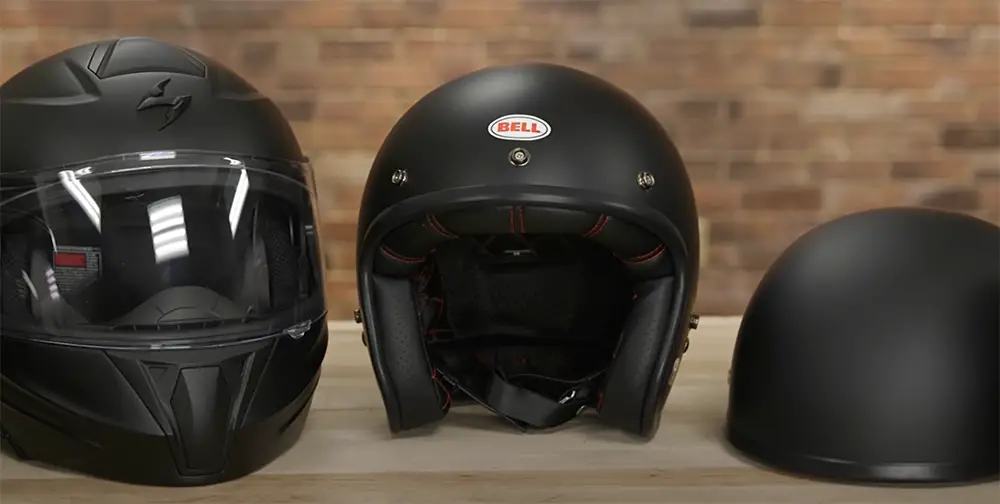
Full-Face Helmets: A full-face helmet covers your entire head, including your face. This type of helmet offers the most protection. However, it can be hot and claustrophobic in warm weather.
Half-Face Helmets: It only covers your head from the top of your brows to the top of your hair. This type of helmet is better for warm weather because it is cooler and more comfortable.
Open-Face Helmets: An open-face helmet covers your head from the eyebrows up but does not have a chinguard. This type of helmet is the most ventilated but offers the least protection. [1]
What are the other things to consider when trying on a new motorcycle helmet?
You should also think about ventilation, weight, and field of view when selecting a new motorbike helmet.
Airflow is crucial for several reasons: it will keep you cool and comfy while riding, as well as allow you to breathe more easily. Look for helmets that have vents that can be opened and closed so that you can adjust the airflow as needed.
Finally, make sure that you can see well out of the visor or face shield on the helmet. You want to have a clear view of the road ahead so that you can avoid obstacles and be aware of what is happening around you.
Is Wearing A Motorcycle Helmet Safer?
The answer to this question is a resounding yes. Wearing a motorcycle helmet is one of the most effective ways to protect yourself while riding.

The goal is to have a snug fit that’s comfortable enough to wear for extended periods of time without being so tight that it’s uncomfortable or causes headaches. A good rule of thumb is that you should be able to fit no more than two fingers between your chin and the strap of your helmet.
Of course, every head is different, so it’s important to try on a few different helmets before you make your final decision. And once you’ve found the perfect fit, be sure to fasten the straps securely. [2]
How To Care For Your Motorcycle Helmet?
To keep your motorcycle helmet in good condition, it is important to regularly clean and inspect it. Depending on the type of helmet you have, the best way to clean it will vary. In either case, be sure to avoid using harsh chemicals or abrasives that could damage the finish of your helmet.
Once you’ve cleaned your motorcycle helmet, take a close look at it to check for any signs of wear and tear. Look for cracks or scratches in the shell, as well as any loose parts or missing pieces. If you notice any damage, it’s best to replace your helmet as soon as possible.
What’s The Difference Between A Motocross Helmet And Other Helmets?
When it comes to sizing, motocross helmets are sized differently than other types of motorcycle helmets. Motocross helmets are designed to fit snugly around your head and face, while still providing ample room for goggles. If you’re looking for a motocross helmet, make sure to try on several different models and brands to find one that fits well.
Other types of motorcycle helmets, such as those worn by cruisers or touring riders, are typically sized more generously. These styles of helmets provide more room in the interior for comfort on long rides, and often have features like vents and visors to protect against the elements. When trying on these kinds of helmets, you should look for one that’s snug but not too tight, with no pressure points around the head.
While motocross helmets and other motorcycle helmets serve different purposes, both types of helmets should feel snug and secure when worn correctly.
Football helmets are designed to protect the player’s head from impact during a tackle or collision. They are larger and heavier than motocross helmets, and they have a faceguard that covers the entire face. Football helmets must meet stringent safety standards set by the National Collegiate Athletic Association (NCAA). When selecting a football helmet, it is important to choose one that is certified by the NCAA and that fits well.
Motocross helmets are designed to protect the rider’s head from impact during a crash. They are lighter and smaller than football helmets, and they do not have a faceguard. Motocross helmets must meet stringent safety standards set by the American National Standards Institute (ANSI). When selecting a motocross helmet, it is important to choose one that is certified by the ANSI and that fits well. [3]
How Tight Should a Motorcycle Helmet Be?
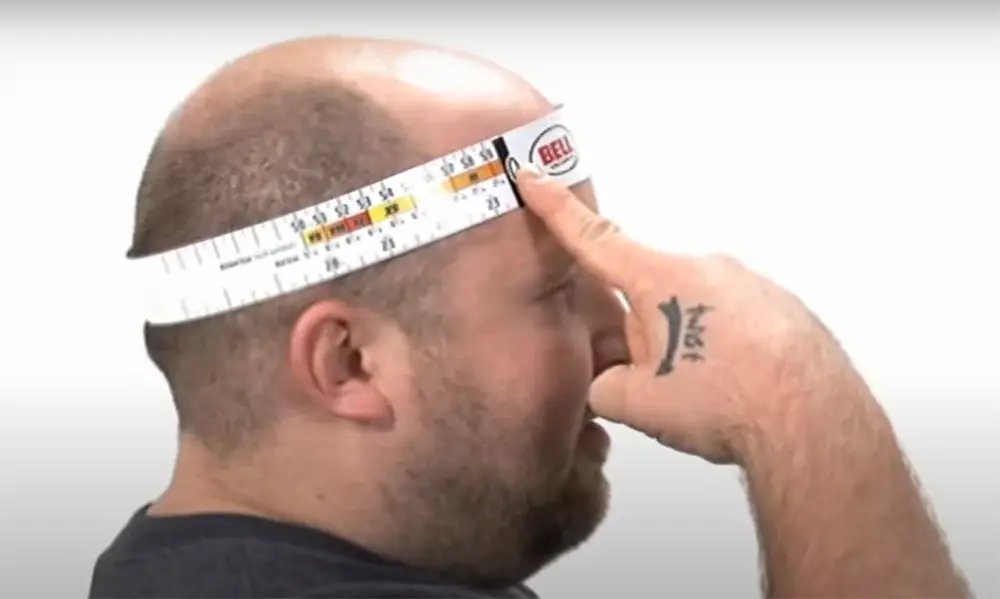
You’ve seen motorcycle riders with their helmets on, and you may have even thought to yourself “Wow, that looks really tight!” And it’s true- motorcycle helmets need to be snug.
How A Motorcycle Helmet Should Fit?
A good way to test if a helmet fits properly is to wear it without the chin strap fastened. The helmet should be tight enough that it doesn’t fall off your head when you move around or nod.
You should also feel pressure around your cheeks and temples. If you don’t, the helmet is too loose and won’t protect you properly in the event of an accident. The next thing to do is to fasten the chin strap and tightening until it feels comfortable but not too tight. You should be able to breathe easily and not feel like the strap is choking you.
It’s too loose if you can fit two fingers between your chin and the strap. Finally, after you’ve fastened the chin strap, try moving the helmet on your head. If it shifts easily or feels like it’s going to fall off, it’s not tight enough.
Motorcycle Helmet Fit Test
You Shouldn’t Feel Any Discomfort
If you’re feeling the discomfort of any kind, something is wrong with the fit. The three main areas where you should feel pressure are evenly distributed around your head. If the pressure is concentrated in one area, that’s a sign that the helmet is too tight or too loose in another area.
There should be no air pockets between your skin and the padding within the helmet. If you can slide your finger in easily around your entire head, then the helmet is too loose. You also shouldn’t have to force it onto your head. If it takes a lot of effort to get on, then it’s probably too small.
The bottom line is: if it doesn’t feel right, it probably isn’t. And if you’re not sure, err on the side of a looser fit. You can always tighten it up once it’s on, but you can’t do anything about a helmet that’s too small except buy a new one.
Once you have the helmet positioned correctly on your head, check to make sure that your field of vision is not obstructed in any way. You should be able to see clearly in all directions without having to move your head too much.

If you wear glasses or sunglasses, make sure that you can still see clearly and that the frames don’t interfere with the seal of the helmet. If they do, you might need to try a different size or style of helmet.
Feel The Helmet Pads On Your Cheeks And Forehead
The padding in the helmet should make firm contact with your cheeks and forehead. If there are any gaps, the helmet is too big.
The helmet straps should also be tight enough that you can’t fit more than one or two fingers beneath them. If they’re too loose, they won’t do their job properly in a crash.
Motorcycle Helmet Break In Period
Even if a helmet fits you perfectly, it might not feel that way at first. That’s because the materials in the helmet need to “break in” a bit.
The best way to do this is to wear it around the house for an hour or so every day. After a week or two, it should start to feel more comfortable.
If it doesn’t, there’s probably something wrong with the fit and you should try a different helmet.
Clean it regularly and replace any damaged parts as soon as possible.
Wear The Helmet For Half An Hour
This will give you a chance to see how it feels in different positions and how well it ventilation works.
Remember, a helmet is only effective if it fits properly. So take your time, do your research, and find the perfect one for you. [4]
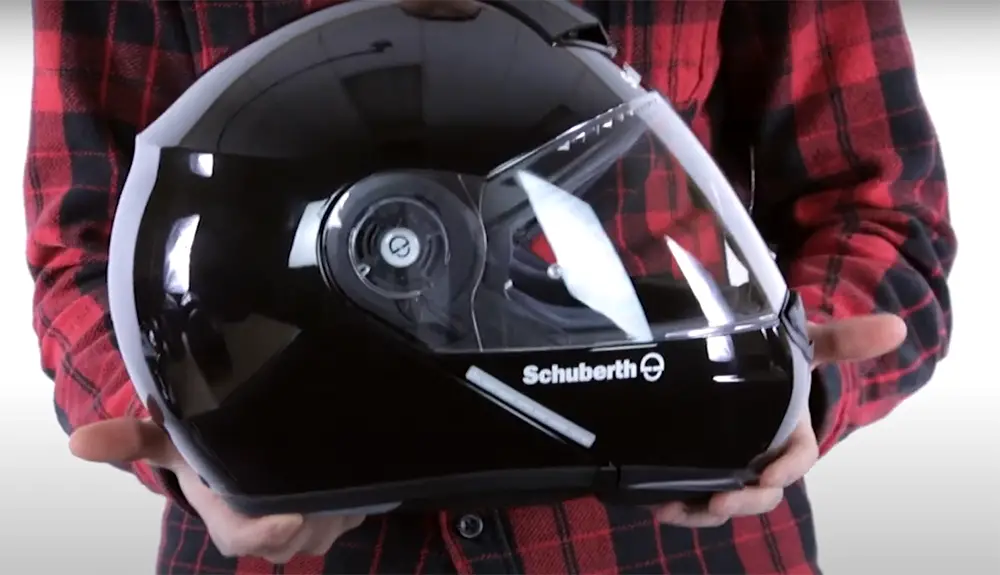
What To Look Out For When Purchasing A Motocross Helmet
When you are looking to purchase a motocross helmet, there are several things that you need to keep in mind. The most important thing is the safety of the helmet. The next thing you want to look for is the comfort of the helmet. You should verify that it is a good fit for your head while riding and that it doesn’t move around. The last thing you want to consider is the price of the helmet. You do not want to spend too much money on a helmet that is not going to be comfortable or safe.
FAQ
How tight is too tight for a helmet?
This is a difficult question to answer as it depends on the helmet model, head shape, and individual preferences. A helmet should fit firmly enough and not move around on your head when you shake your head side to side or up and down, according to a reasonable rule of thumb.
Putting the chin strap on and attempting to push the helmet off your head from the top is another method to see whether your motorcycle helmet is too loose. If the helmet moves, it’s too loose.
If you’re still undecided about how tight your motorbike helmet should be, then see a professional at a reliable motorcycle shop.
How do I know if my helmet is too loose?
It’s too loose if the helmet moves more than an inch in any direction. To test whether your helmet is too tight, try this:
- Put the helmet on and fasten the straps
- Grab the bottom of the helmet and try to roll it up off your head
- If the skin on your forehead moves with the helmet, it’s too tight
- If you can roll the helmet off with ease, it’s too loose
Another way to check is by doing what’s called the “hair test.” Simply put, if you can fit more than two fingers between your chin and strap, the helmet is too loose.
If you have a flip-up or modular helmet, it’s especially important to pay attention to how tight the chin bar is, as this can be a major source of discomfort if not properly adjusted. [5]
When in doubt, always err on the side of a tighter fit, rather than a looser one.
Are new helmets supposed to be tight?
It is normal for new helmets to feel a bit tight. This is because the helmet will “break in” and conform to your head shape after a few uses.
If your helmet feels too tight, you can try adjusting the straps or wearing it for shorter periods of time until it loosens up.
What can I do to get a better helmet fit?
- Wear the right size. This seems obvious, but it’s worth reiterating. Make sure you try on different sizes and shapes of helmets before settling on one. And don’t hesitate to ask for help from a knowledgeable salesperson.
- Adjust the straps. Most helmets come with adjustable straps that allow you to customize the fit. Play around with them until you find a comfortable yet secure position.
- Add padding. If your helmet is still feeling a little loose, there are special pads you can buy to add extra cushioning and improve the fit. Just be careful not to overdo it, or you’ll end up with a too-tight helmet.
Useful Video: Motorcycle Helmet Fit Guide – How To Size A Motorcycle Helmet – Helmet Sizing Guide
Conclusion
It’s now time to figure out the tightness of your motorcycle helmet should be, based on everything you’ve learned. If you are still unsure, always err on the side of caution and go for a tighter fit. A loose helmet is more dangerous than a tight one, and it is better to be safe than sorry.
We hope that this article has been helpful. Ride safely!
References:
- https://www.headsdontbounce.com/motorcycle-helmets/types-of-motorcycle-helmets/
- https://www.cdc.gov/transportationsafety/mc/index.html
- https://powersportsguide.com/why-motocross-helmets-are-different/
- https://www.headsdontbounce.com/motorcycle-helmets/how-tight-should-a-motorcycle-helmet-be/
- https://motorandwheels.com/do-motorcycle-helmets-loosen-up/


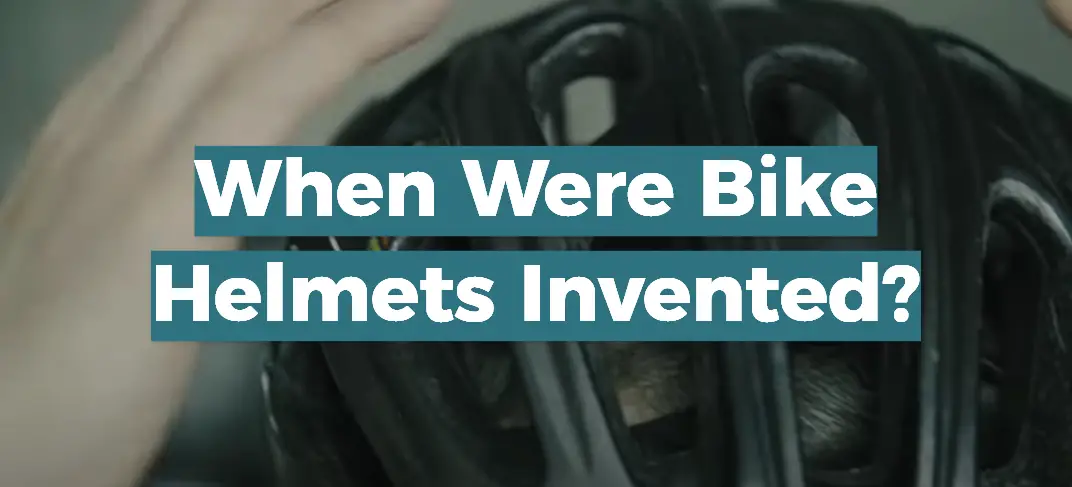
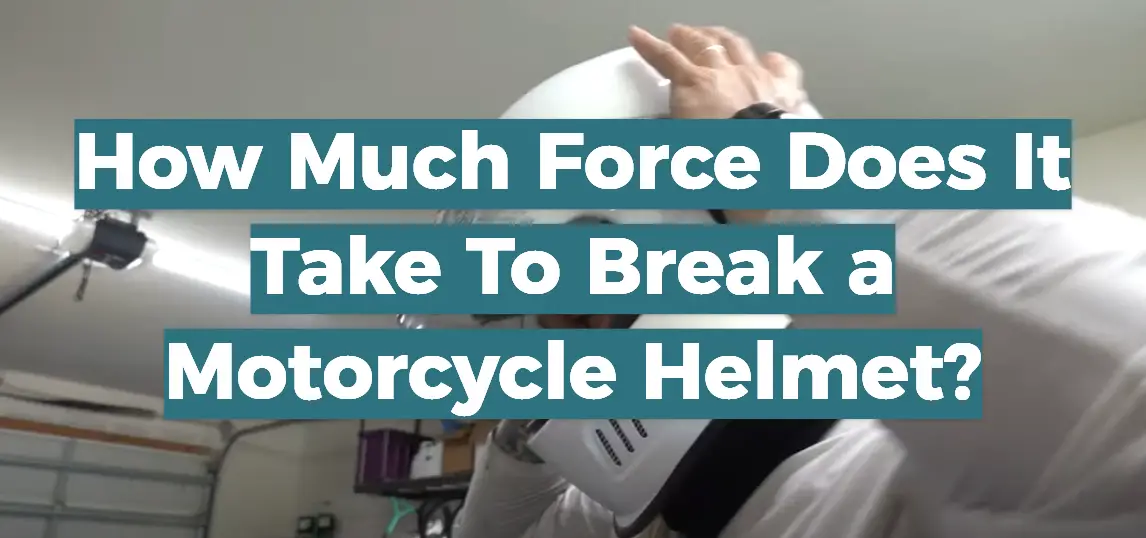

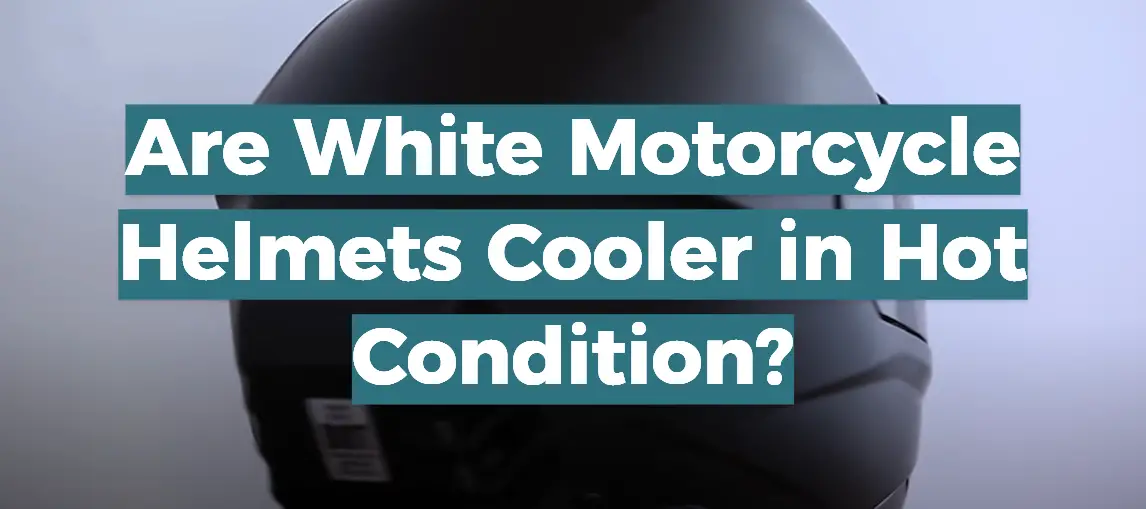
My personal experience with motorcycle helmet fit has taught me that the helmet should be snug, but not overly tight. I once made the mistake of buying a helmet that was too small for my head, thinking it would give me more protection. However, it ended up causing discomfort and headaches during rides.
After realizing my mistake, I did some research and found that a properly fitted helmet should allow for minimal movement when shaking your head side to side and up and down. It should also feel snug around the cheeks and temples, without any pressure points or pinching.
I now make sure to always try on helmets before purchasing and pay attention to how they fit on my head. A properly fitted motorcycle helmet not only provides better protection, but also allows for a more comfortable ride.